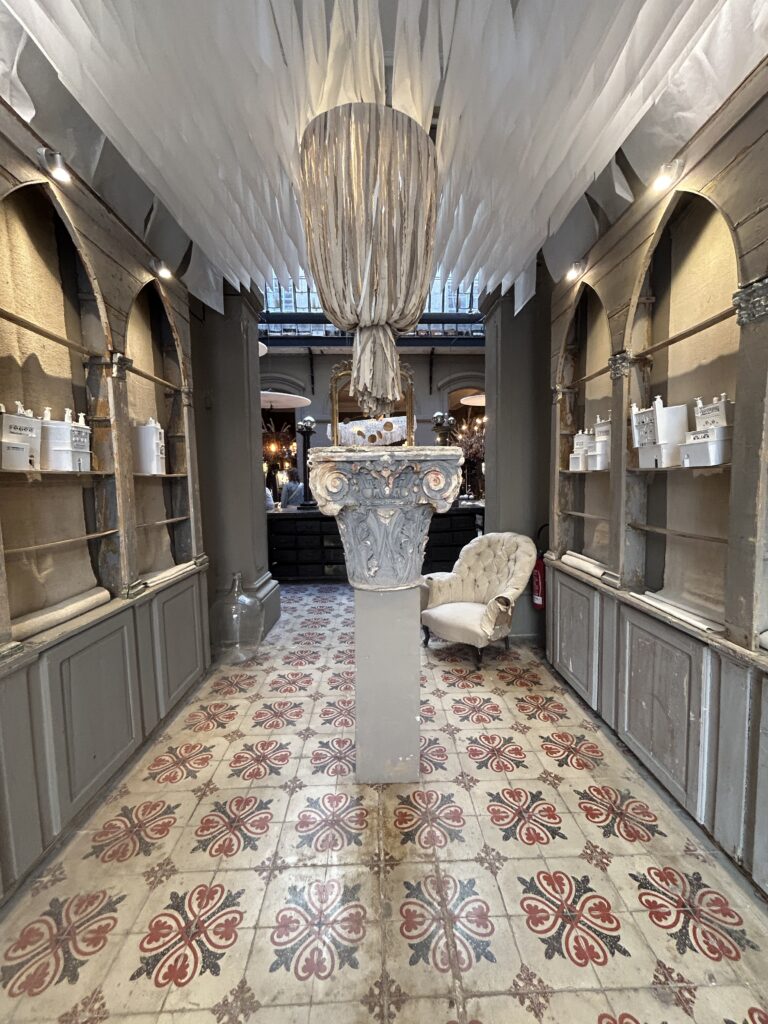
Hallelujah, Our guest is feeling much better (merci), and she wasted no time making up for the lost day. Two club chairs later—yes, two—some pharmacy jars, antique dishes, and a collection of silverware that would make any brocante-lover weak in the knees, and voilà: she’s officially in brocante biting spirit.
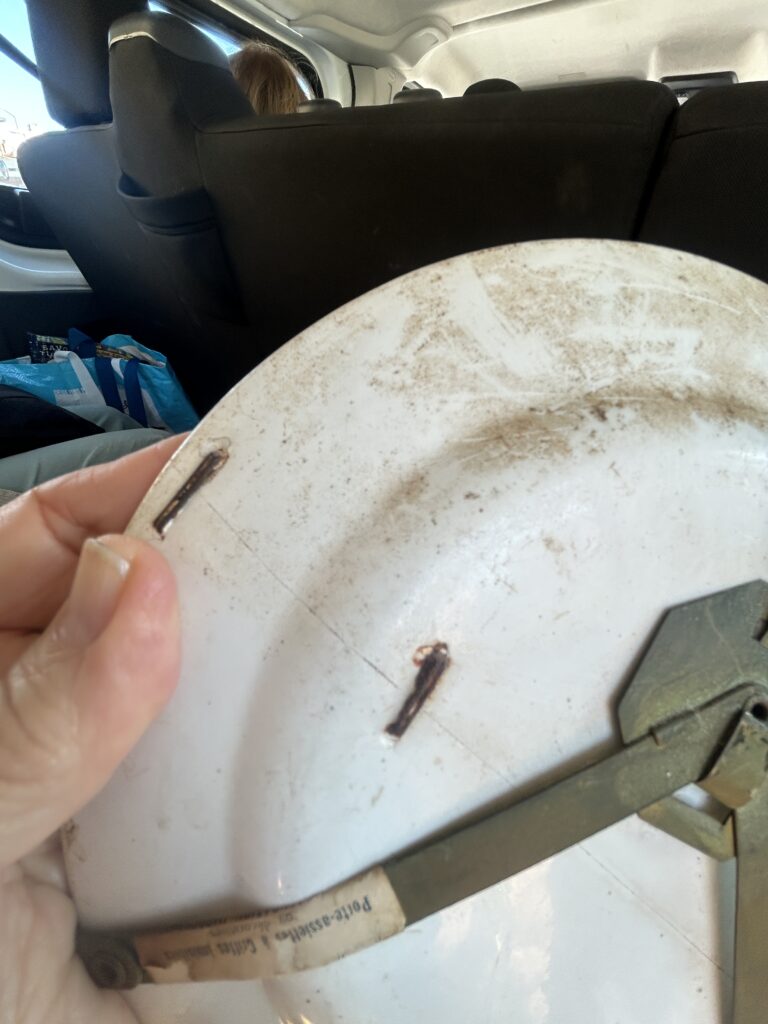
Now here’s an idea: want to play along? Tell me what I should be on the lookout for. Or better yet—let me be your personal Antiques Roadshow… on foot. Ask me a question about antiques, and I’ll go hunting for it in the next market, snap a photo, and tell you a story. You know I can’t resist a good dare and chase- that is how this blog started- on a dare.
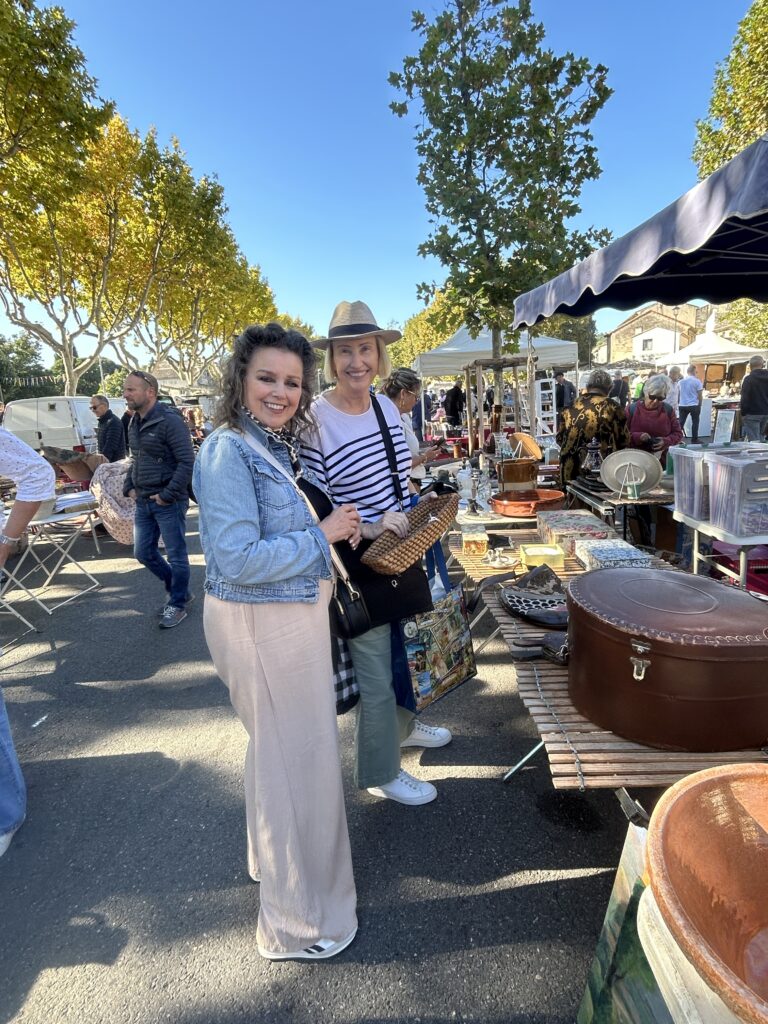
As The French La Vie nears its 20-year anniversary (yes, really—twenty years!), I’ve decided to mark the occasion by doing something special each day. Maybe sharing my favorite post and having to give away with each.
Do you have a favorite post? If something’s stuck with you, I’d love to hear it.
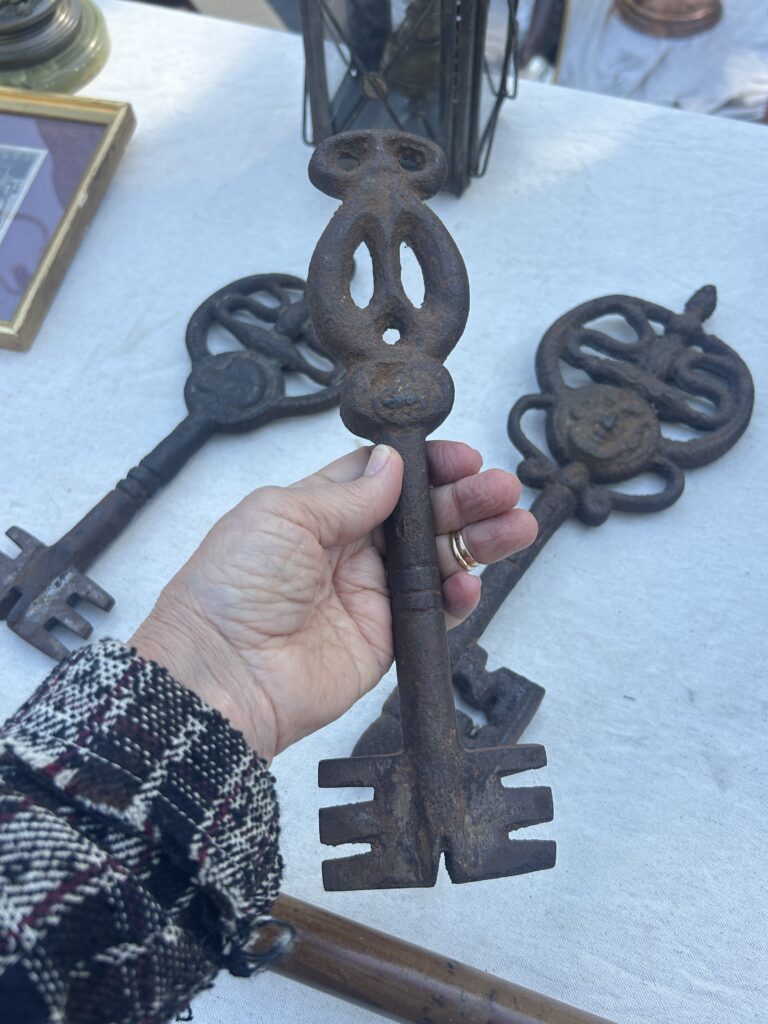
Yes, those would be the biggest chunky antique keys I’ve ever seen in my life. You would need a donkey to carry that around with you.
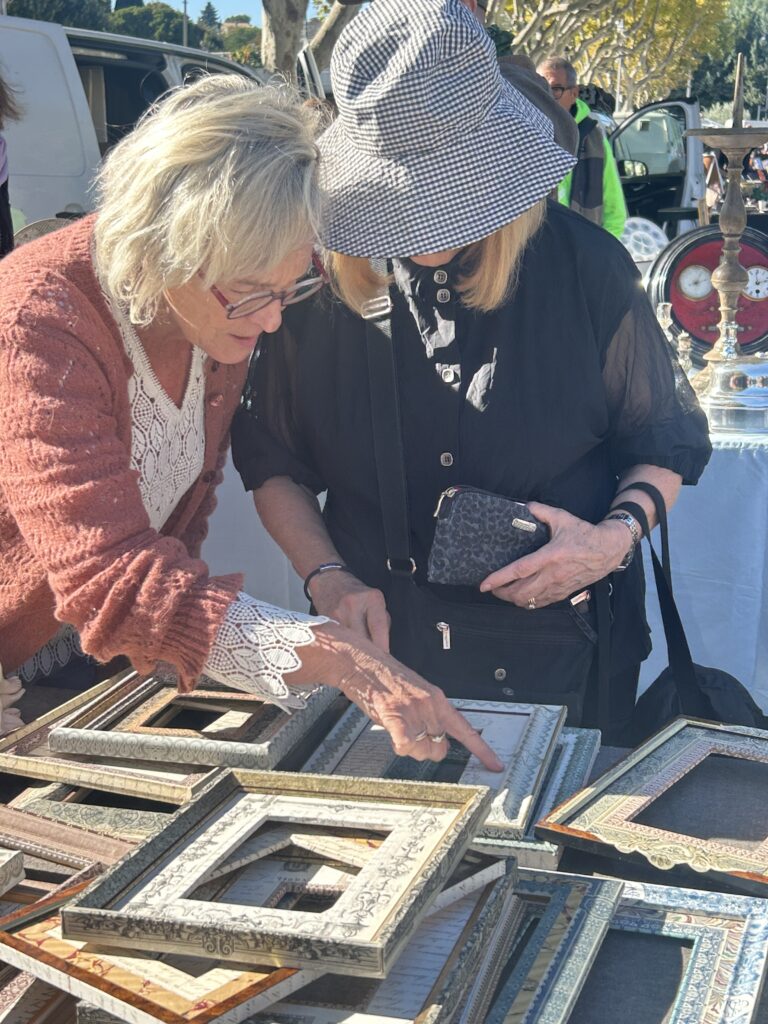
Oh—and if I really have blogged every single day for twenty years, that would mean 7,300 posts. Imagine how many photos!?
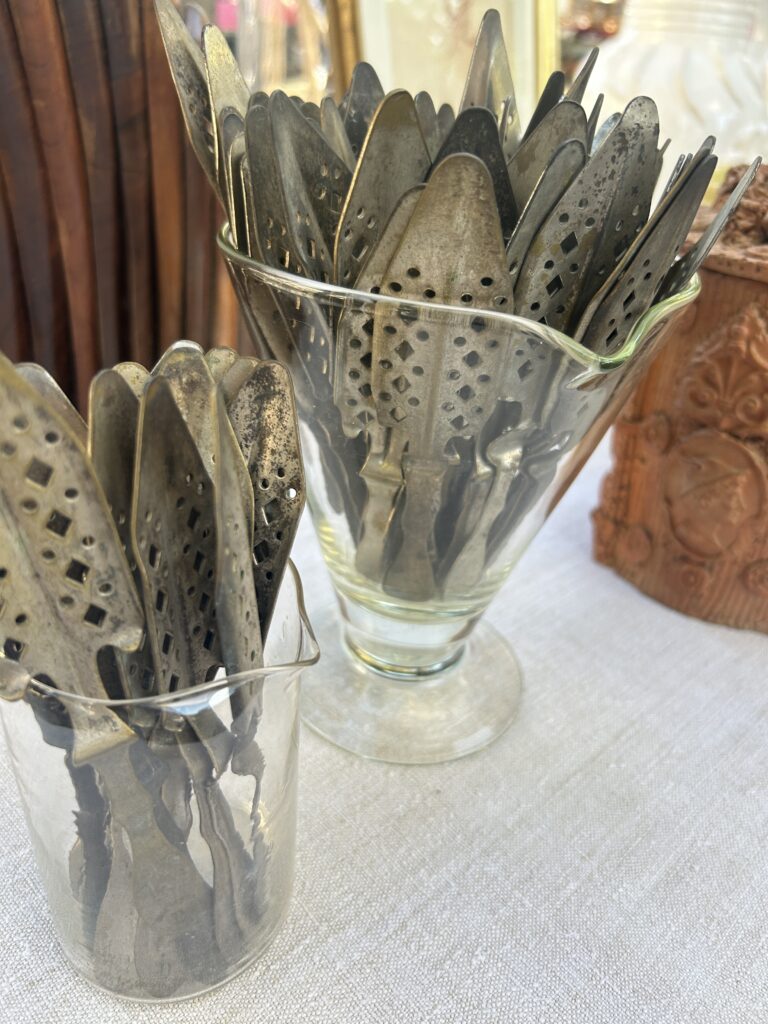
Absinth Spoons:
You’d pour a measure of absinthe into a glass, place a special absinthe spoon—flat and slotted—across the rim, and set a sugar cube on top. Then, cold water was slowly dripped over the sugar cube, from an absinthe fountain or small carafe. As the sugar dissolved and the water mixed with the absinthe, the drink would turn cloudy and opalescent—this was called the louche, the mystery. Some say that they lite the sugar cube on fire? It sounds dramatic, sounds cool, but it’s not the 19th-century ritual. Darn.
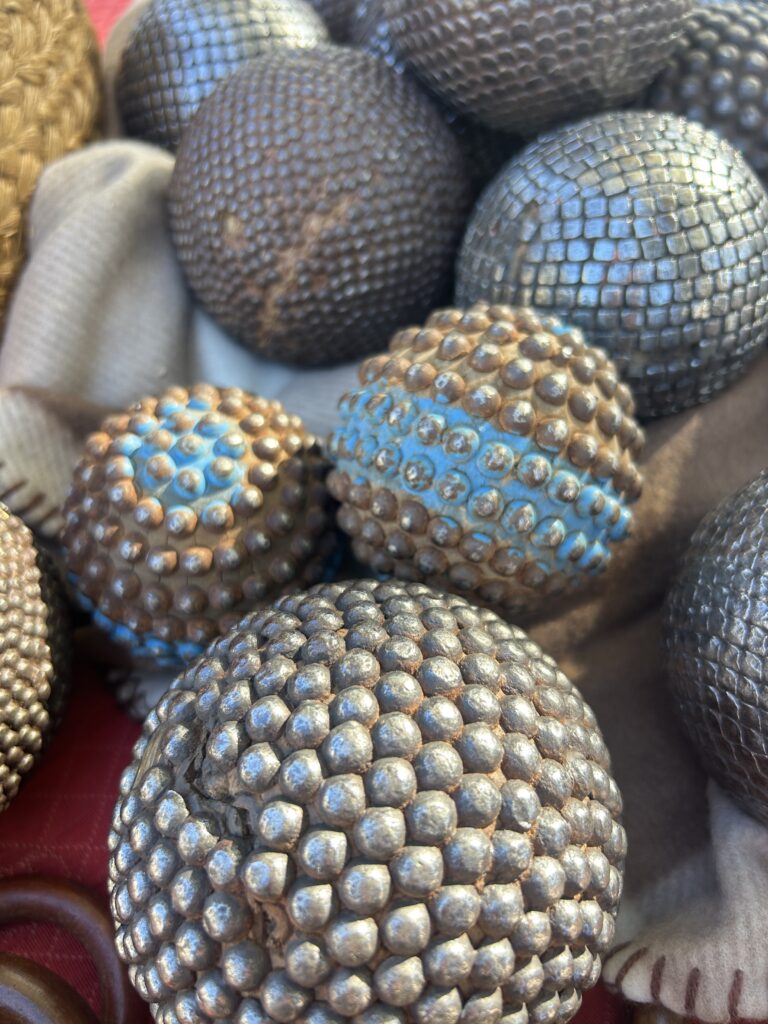
Here’s a photo of the Lyonnaise pétanque balls from the 1800s that I came across—solid, hand-forged nailed beauties with all the charm (and weight!) of a bygone era. Though the Lyonnaise version of the game is played a little differently, it goes more or less like this:
You toss the small wooden ball, the cochonnet, a short distance away. Then, players take turns throwing their metal balls, trying to get as close as possible. Only the team with the closest ball scores, and they get one point for each of their boules that are nearer than the opponent’s. First to 13 wins. Simple. Strategic. Best played with a bit of shade and maybe a glass of pastis.
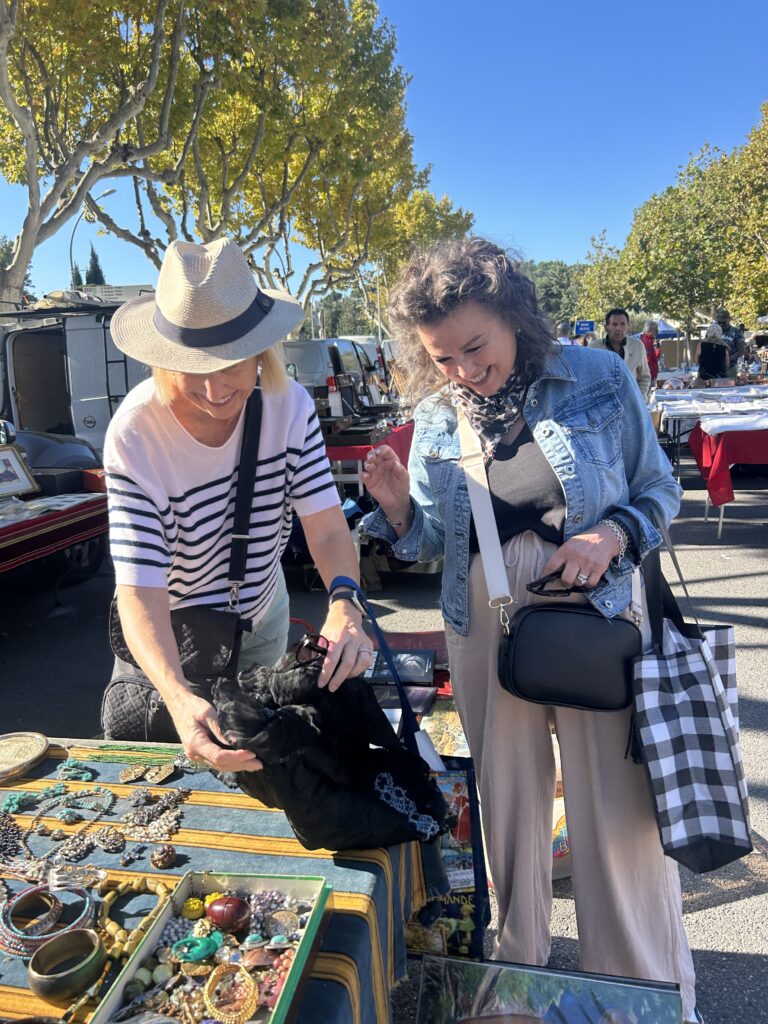
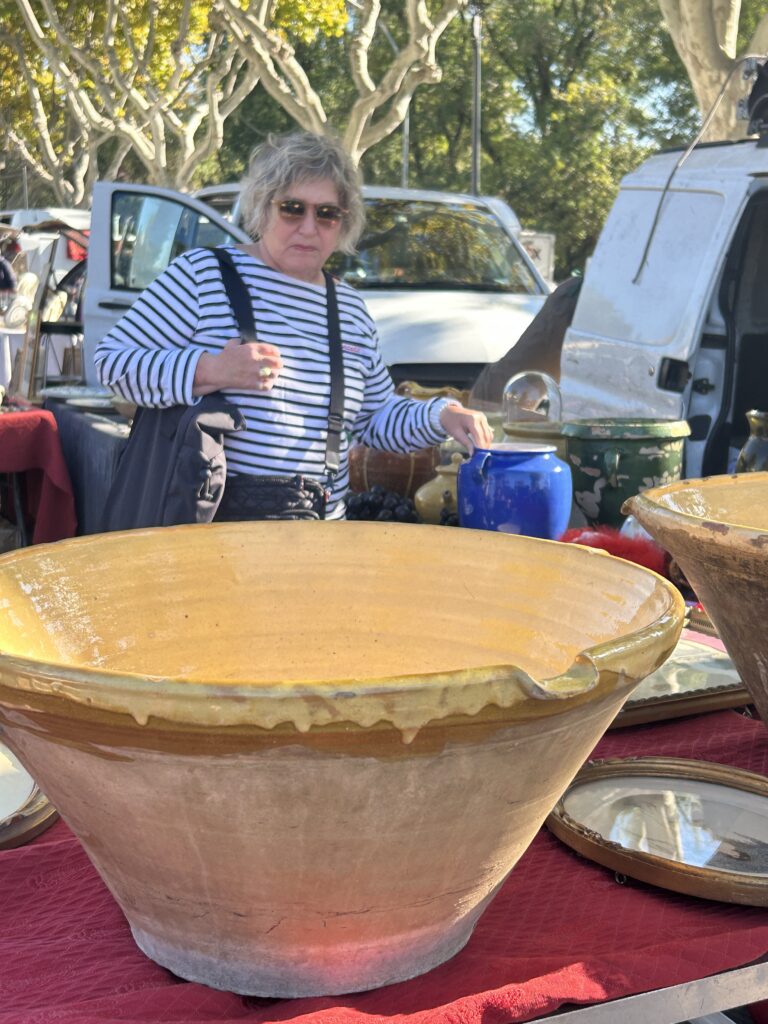
In Carpentras, one of the oldest sweets in France—les confits—were made as far back as the 14th century. These early sweets were crafted in beautiful glazed pottery bowls, often a warm mustard yellow or olive green, typical of Provençal ceramics.
The process was slow and meticulous. Fruits, seeds, or nuts (like aniseed or almonds) were coated with layer after layer of sugar syrup. This was done by gently turning them in the pottery bowls over heat, adding a little syrup at a time and letting it dry between turns. It could take days to build up the perfect candy shell—glossy, carmelized, crunchy- enough.
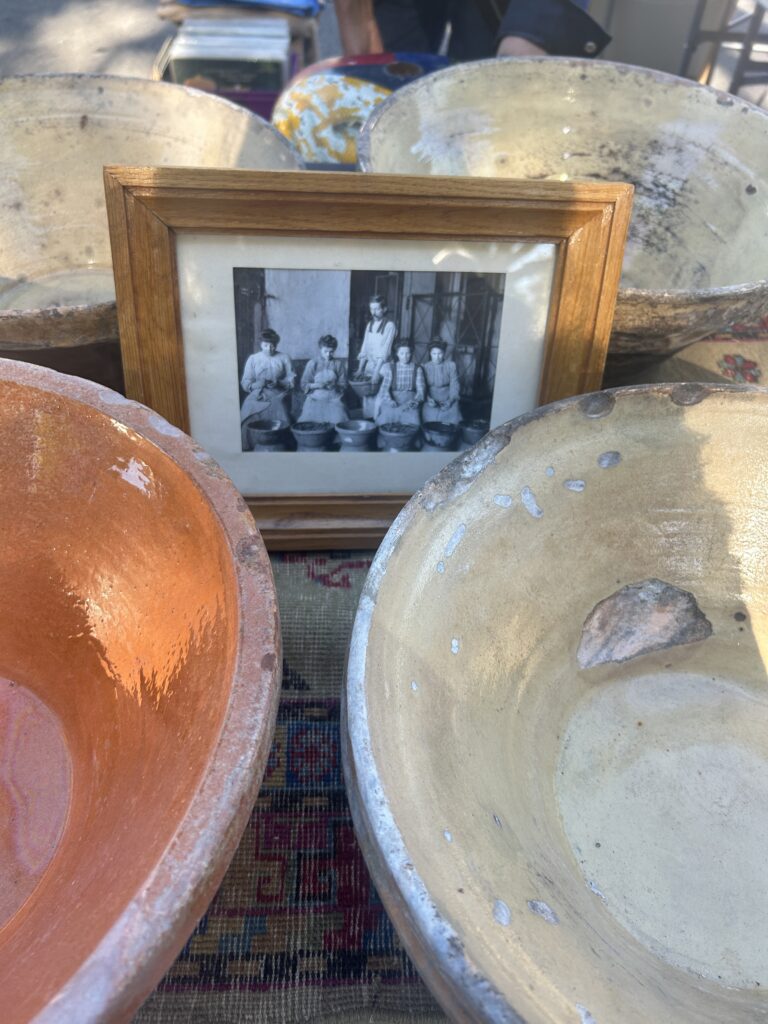
These confits weren’t treats—they were considered medicinal, often sold in apothecaries. A spoonful of sugar really did help the medicine go down.
The tradition lives on in Carpentras, where berlingots—flavored, striped hard candies. Later became the town’s sweet signature. But it all began with those humble, hand-glazed bowls and a slow swirl of sugar.
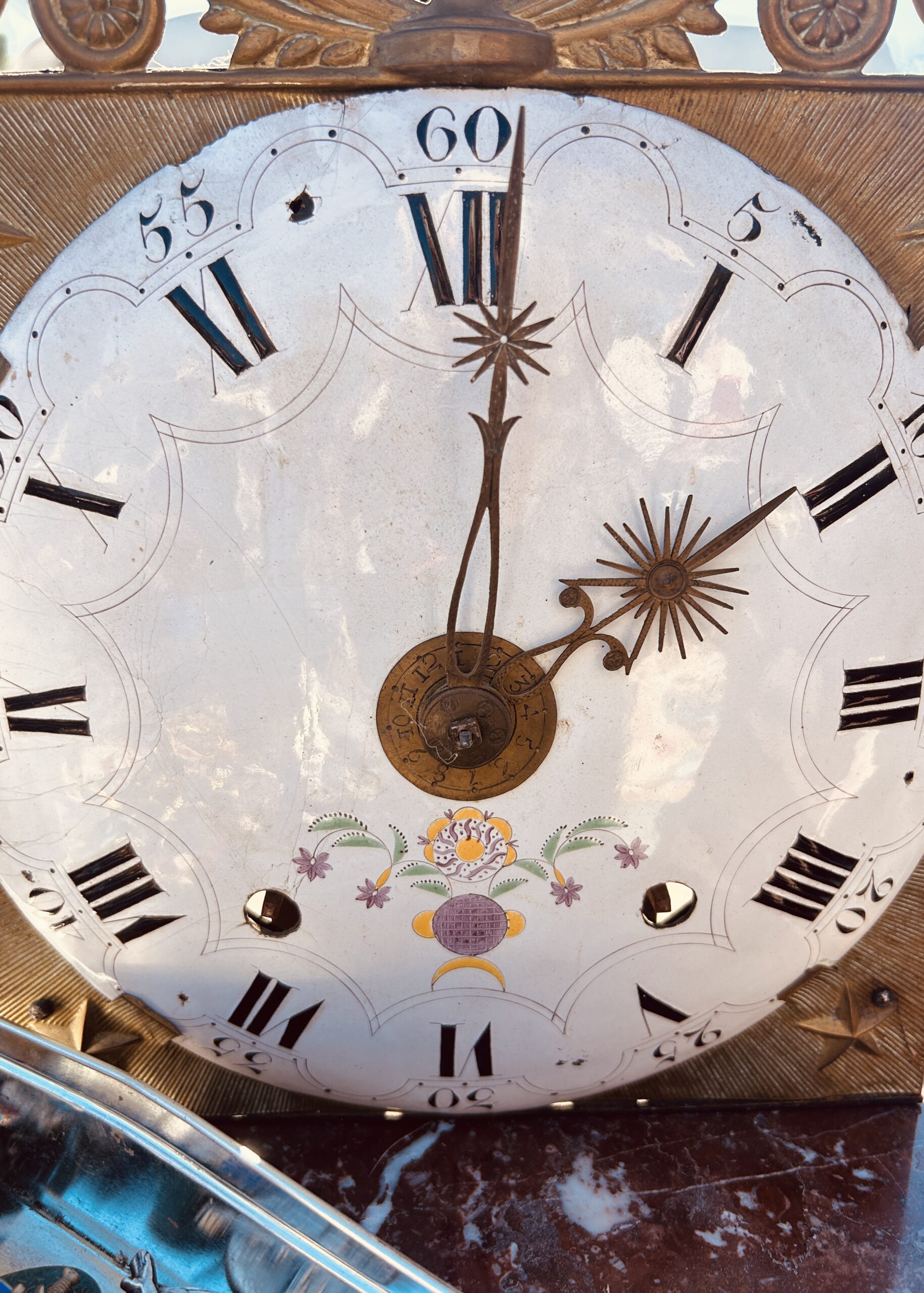

Leave a Reply to Linda McDaniel Cancel reply